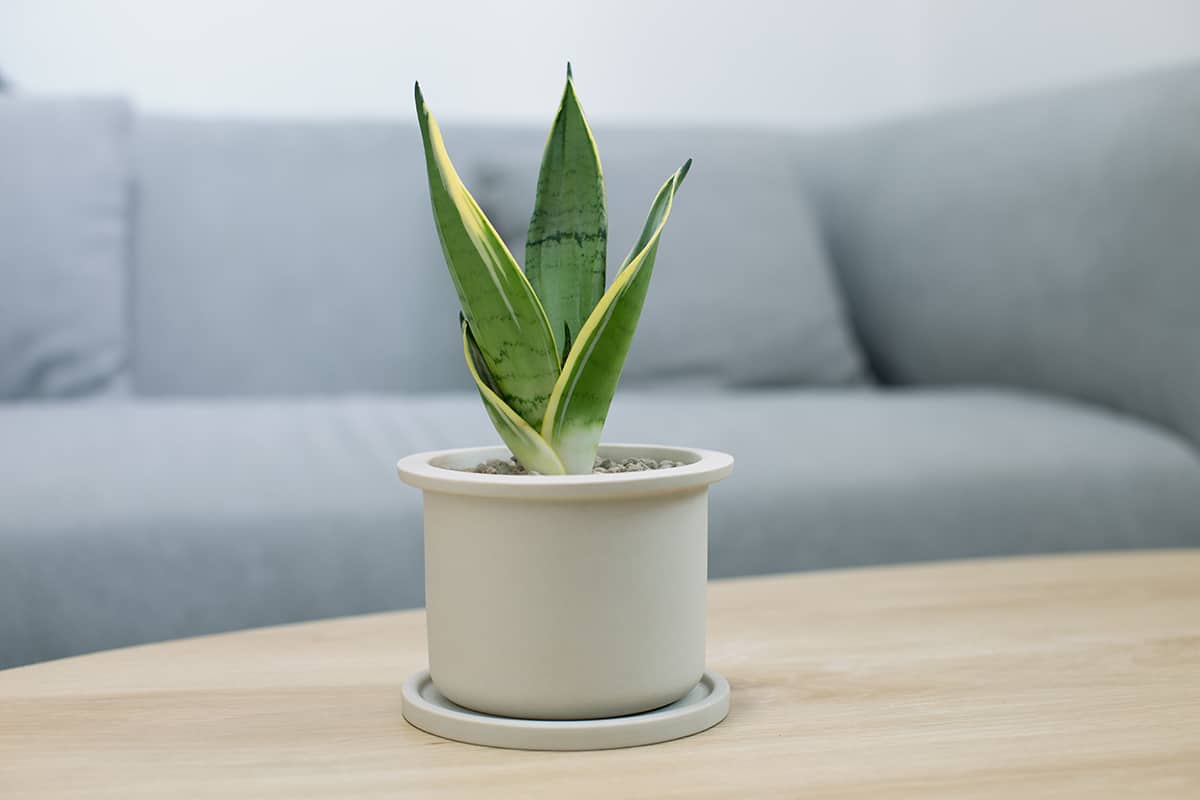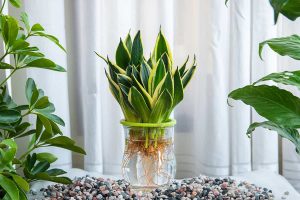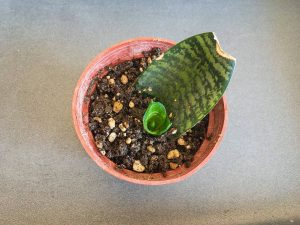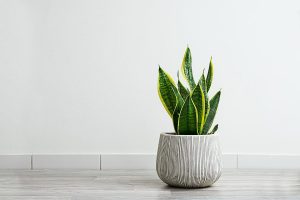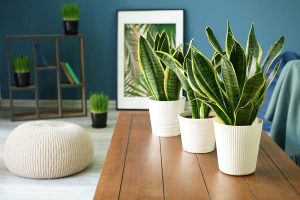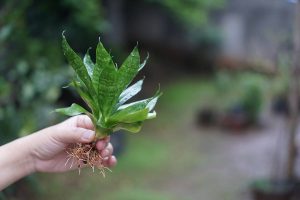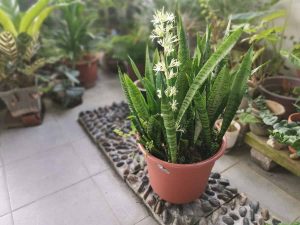Snake plants are low-maintenance houseplants that don’t need much attention, but they will thrive in conditions that are most similar to the environment they natively hail from. Here we investigate the ideal levels of humidity for snake plants.
Table of Contents
What is the Ideal Humidity Level for Snake Plants
Snake plants are native to West Africa, where the climate is arid. The lack of rain and moisture makes for dry air conditions, so snake plants are accustomed to growing in low humidity.
When growing snake plants in your home, they will thrive in conditions that closely replicate those found in their native habitat; however, since snake plants are very adaptable, you don’t usually need to worry too much about humidity levels.
Snake plants, such as the Whale Fin Snake Plant and the Bird’s Nest Snake Plant, are known to be low-maintenance plants that are robust and difficult to kill. They thrive on neglect and don’t need much attention or care.
They will survive in humidity that is lower than average or humidity that is higher than average, but if you want your snake plant to feel at home, then humidity levels of between 40 and 50% are ideal.
Fortunately, this is the typical level of humidity found in most homes, so many snake plant owners won’t need to do anything to alter their humidity.
Signs of Low Humidity in Snake Plants
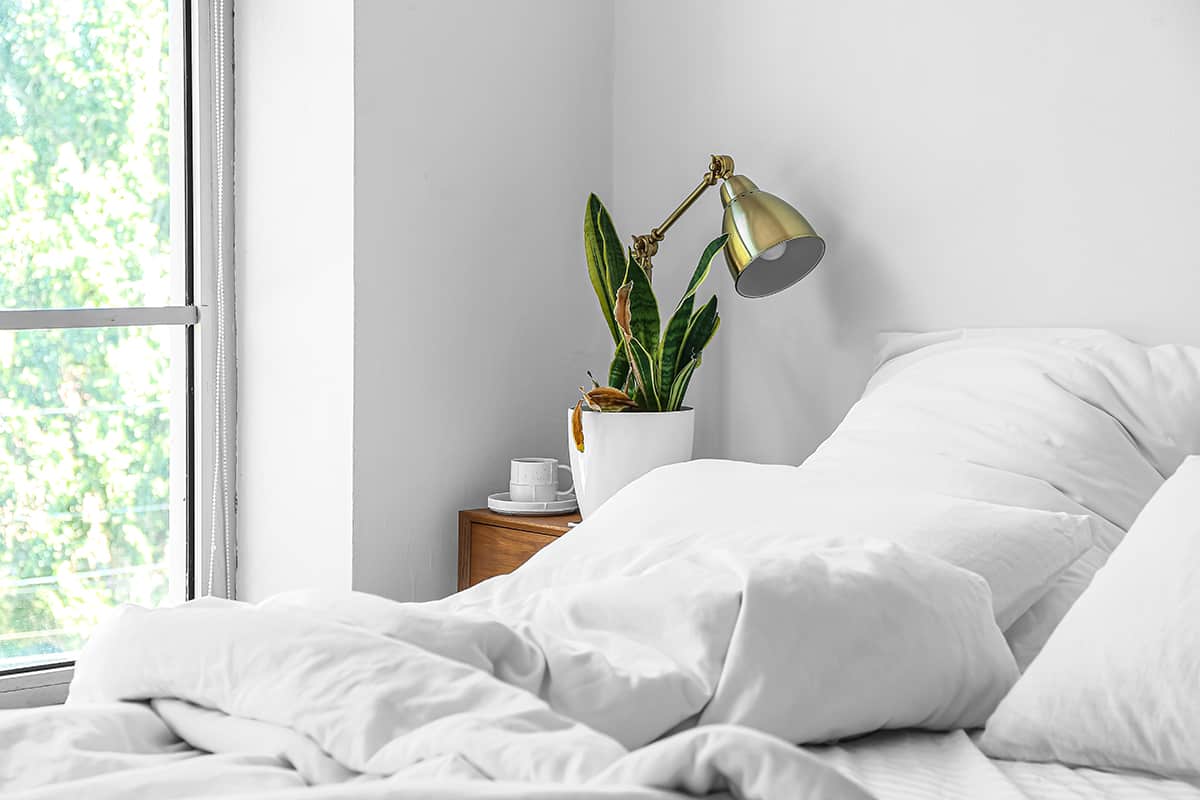
If you live in an area with very low humidity, then the levels of moisture in the air in your home may also be low. Although low humidity will not kill a snake plant, it can have a negative effect on the foliage.
The most common sign of a snake plant struggling with low humidity is brown tips on the ends of the leaves. The brown tips will look dried out and crispy. Other signs that the humidity is lower than ideal is if the snake plant leaves start to turn yellow or go a little floppy.
Unfortunately, these signs are also indicators that the snake plane is being overwatered or underwatered, so it can be tricky to identify exactly what the issue is.
Problems with watering are more common than problems with humidity, so always investigate the condition of the soil and roots to see if your snake plants’ symptoms are a result of inappropriate water levels. If the water levels are fine and you are aware that your climate is very dry, then this points to an issue with low humidity.
Fix Low Humidity for Snake Plants
If low humidity is causing your snake plant issues, then this is easy to fix. Ultimately you need to increase the humidity levels for your plant, and there are a number of ways to do this.
Group plants together
If you only want to marginally raise the humidity level for your snake plant, the best way to do this is by grouping a number of plants together.
When the plants transpire, they release small amounts of moisture into the air, naturally raising humidity levels. This is also a great option if you don’t want the hassle that comes along with spritzing plants or refilling pebble trays.
Use water mister
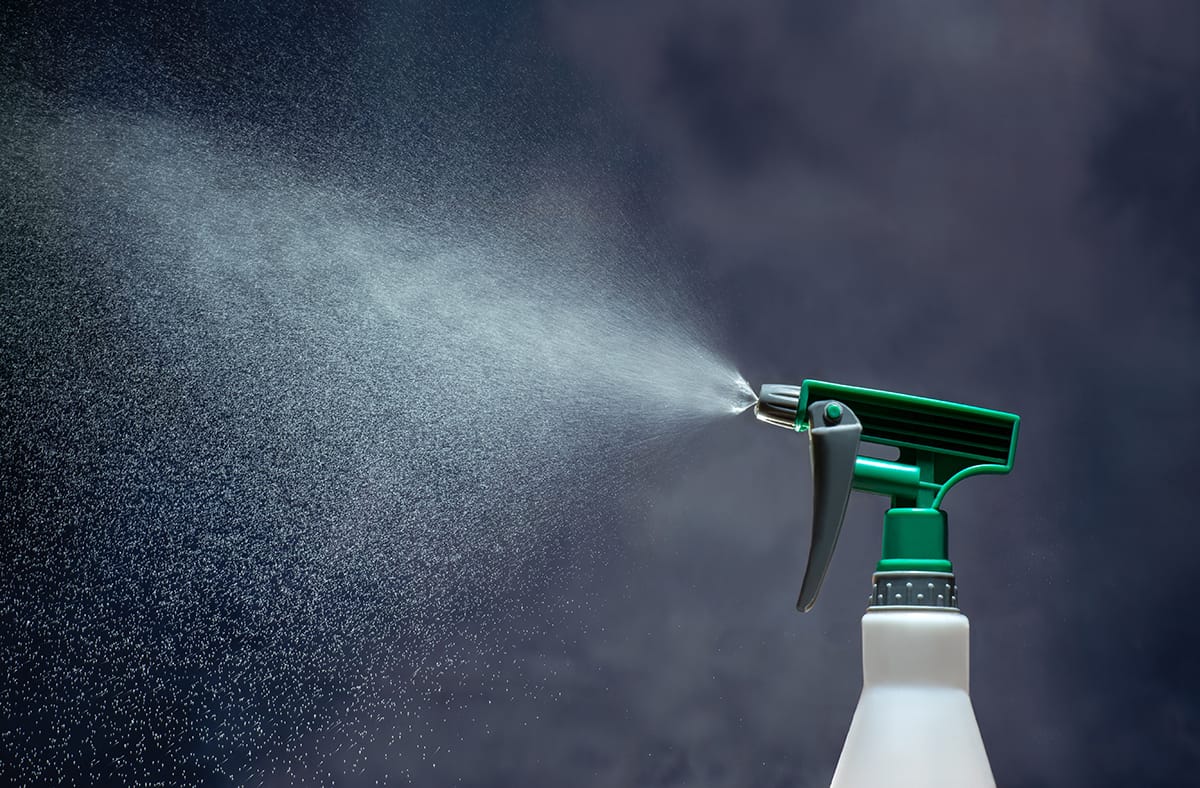
Many people enjoy using water misting spray on their plants, as tending to plants in this way can be quite therapeutic. Simply fill a spray bottle with water and target it at the snake plant’s leaves. As the water evaporates, the humidity rises.
Use humidifier
An electric humidifier can be a good solution if you want to increase humidity across a whole room, for example, if you have a lot of plants that like humidity or if the dry air is affecting respiratory conditions amongst family members.
Simply plug your humidifier in, and it will release mist into the air to increase humidity levels. Remember to routinely refill the water in the humidifier and clean it out to avoid misting mold into the room.
Use pebble tray
A pebble tray is easy to make, and it is relatively low maintenance to keep it topped up. You simply need a tray full of pebbles, which you then pour water over. The plant then stands on top of the pebbles, and as the water evaporates from the pebbles, it increases the humidity around the plant.
You need to ensure the water in the tray doesn’t come into contact with the bottom of the snake plant’s pot. Otherwise, the soil could absorb water through the drainage holes. The pebble tray will need to be topped up with water after it has all evaporated.
Move to bathroom
Some areas of the home, namely the bathroom and kitchen, have higher humidity levels than others. These rooms have more moisture in the air because of the continual use of showers, baths, and kitchen taps. If your snake plant needs to be in a more humid environment, try moving it to the kitchen or bathrooms.
Signs of High Humidity in Snake Plants
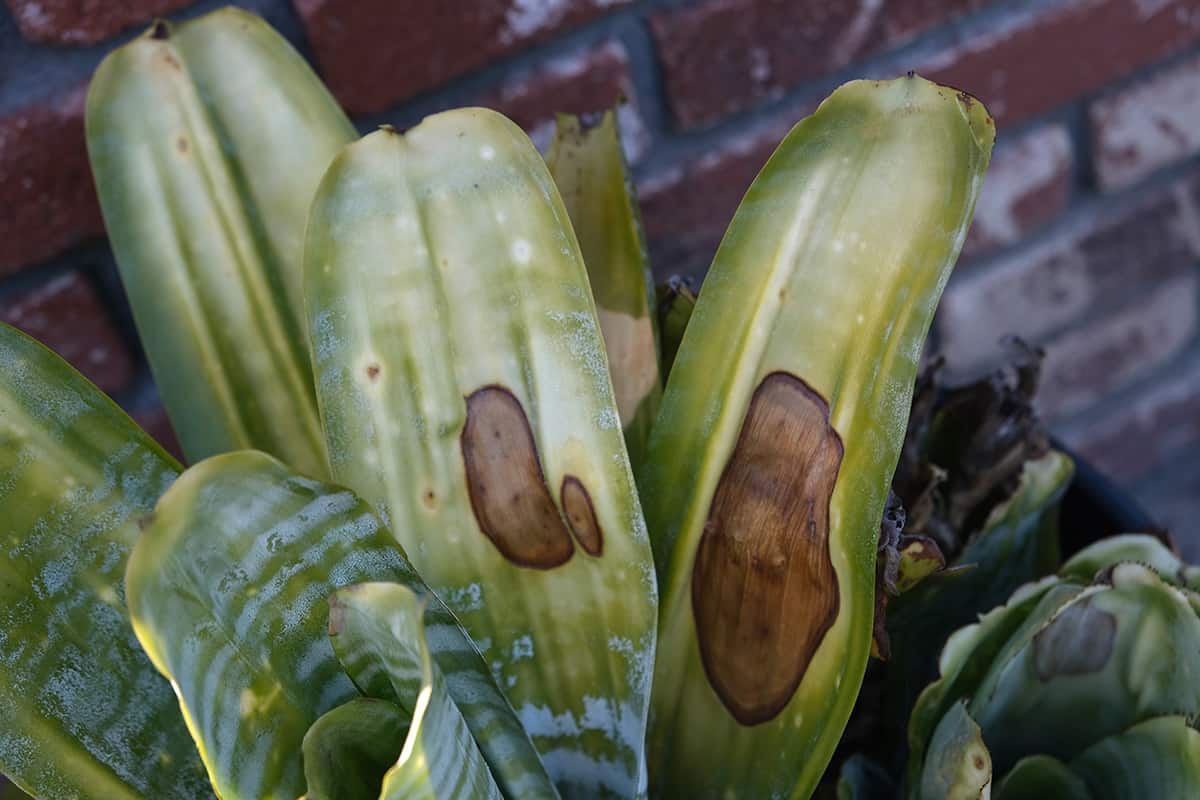
Moderately high humidity will not usually bother a snake plant, but if the humidity gets very high, it can cause adverse effects. High humidity is a common cause of fungal disease, pest infestations, and leaf spots.
Snake plants are typically not very susceptible to disease or pests, so if you have noticed one of these issues on your plant, then high humidity could be to blame. Moist conditions allow mold, bacteria, and fungus to thrive, and pests such as spider mites and fungus gnats also prefer moist conditions.
Fix High Humidity for Snake Plants
If your snake plant is suffering the effects of humidity that is too high, you first need to address the symptoms. If a pest infestation is taking hold of your plant, isolate it from other plants so that the pests don’t spread, and treat the infestation. The best method will depend on the type of pests.
Many organic solutions exist that won’t harm your plant or the environment. If the problem is a disease, remove all of the affected leaves and then treat the disease. For example, fungal diseases can be treated with fungal sprays.
Once all evidence of the problem has gone from your snake plant, you can move it back to its usual place amongst other plants. Now you need to work to lower the humidity to prevent the same issues from reoccurring.
Stop spritzing
Some people believe snake plants enjoy high humidity and spritz them with a water spray at the same time as spritzing their other humidity-loving houseplants.
If you have been doing this, it’s important that you stop to help lower the humidity for the houseplant and move it away from other plants that get spritzed.
Use dehumidifier
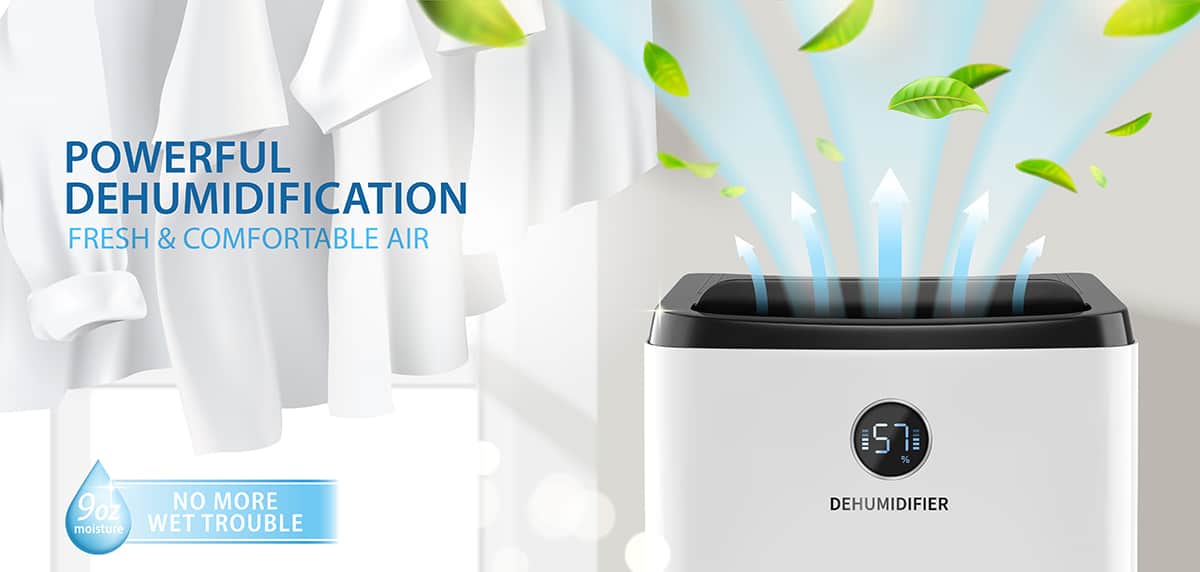
If your climate is naturally humid, a dehumidifier is your best option for lowering the humidity. These absorb and filter the moisture from the air. They are very easy to use- they simply plug in and then need to be emptied of the water they have collected at the end of each day.
Move plant
If your snake plant is in a particularly humid part of the house, such as a kitchen, move it to a room where there isn’t a water source, such as a bedroom or living room.
